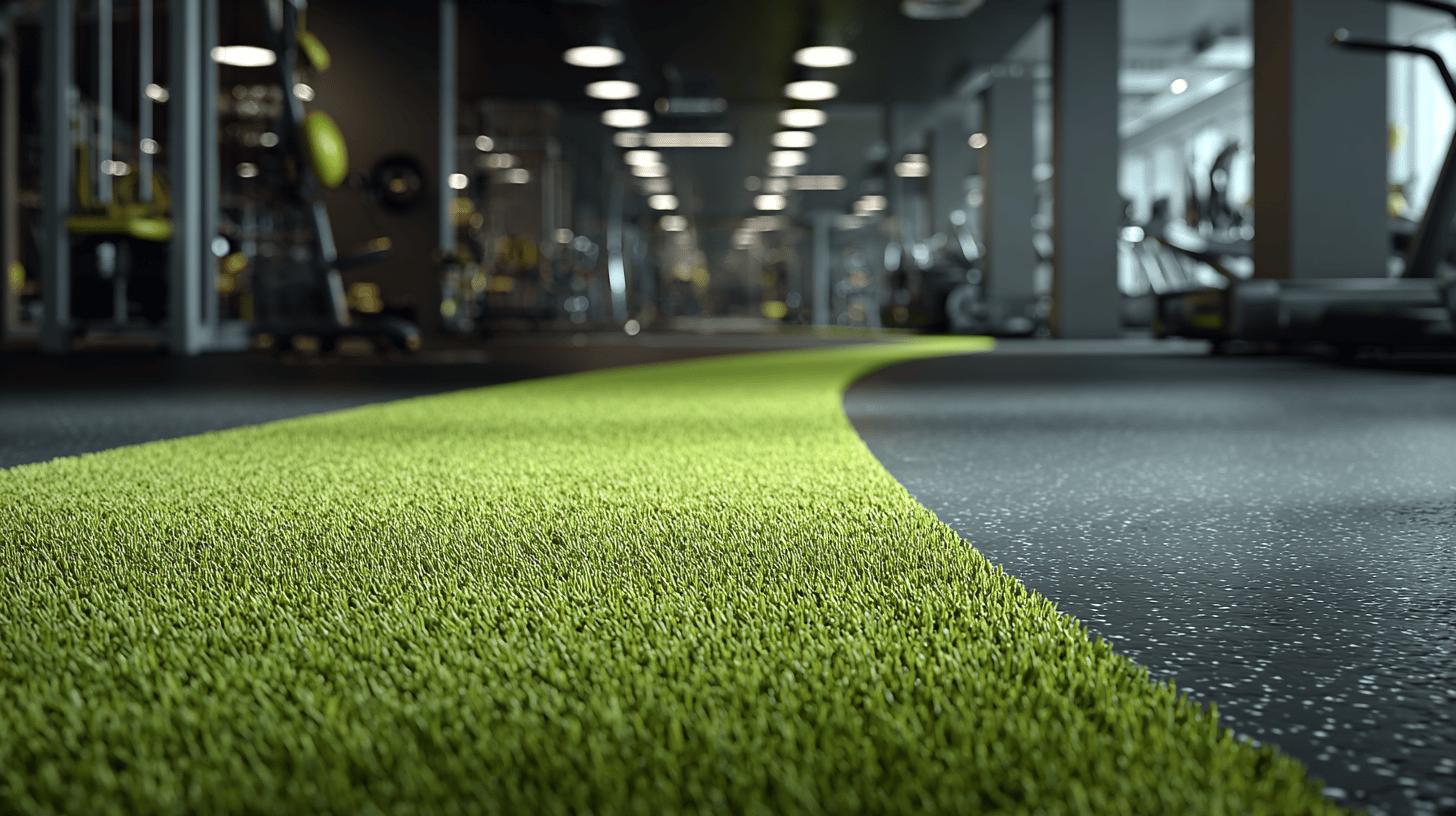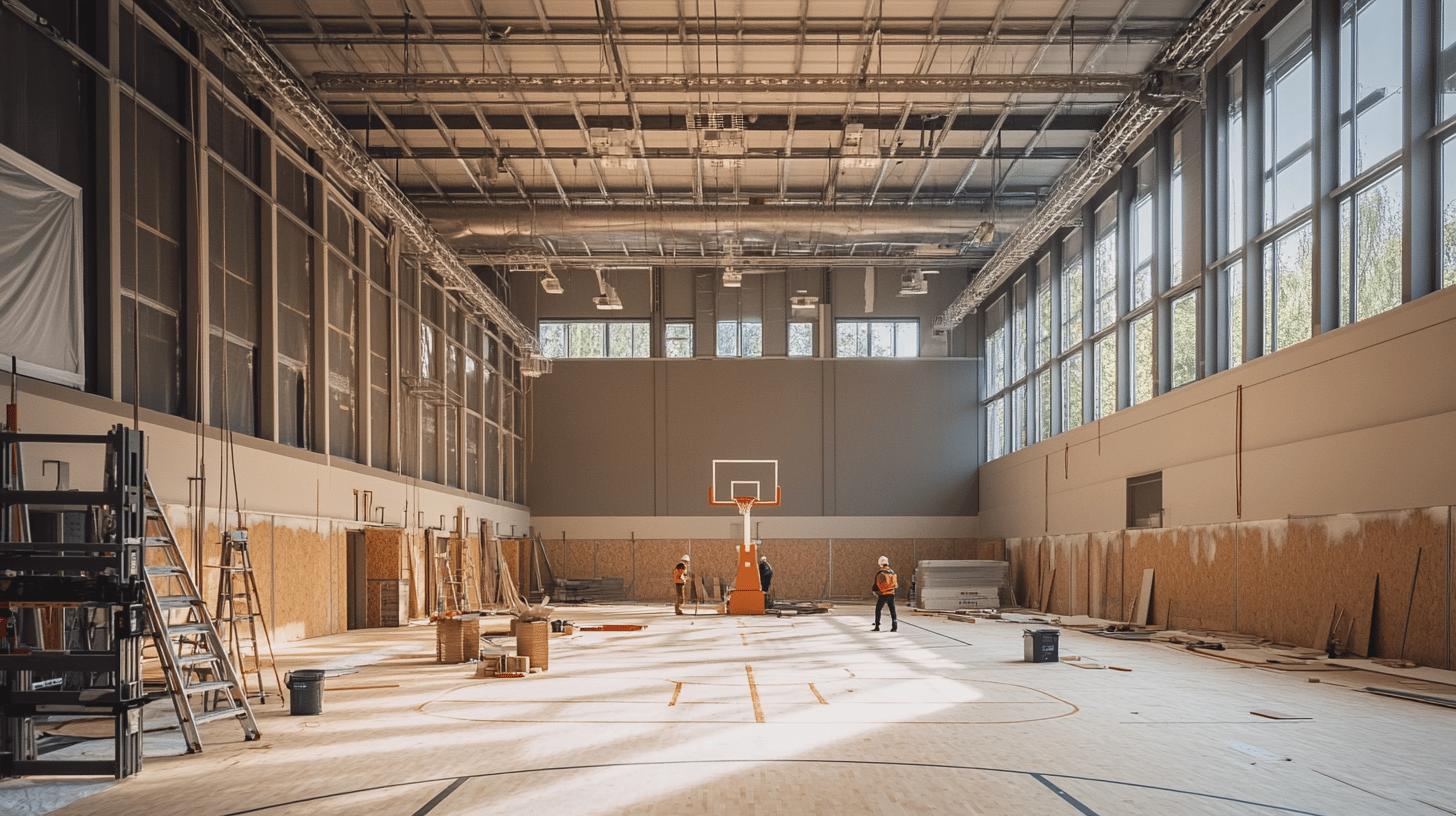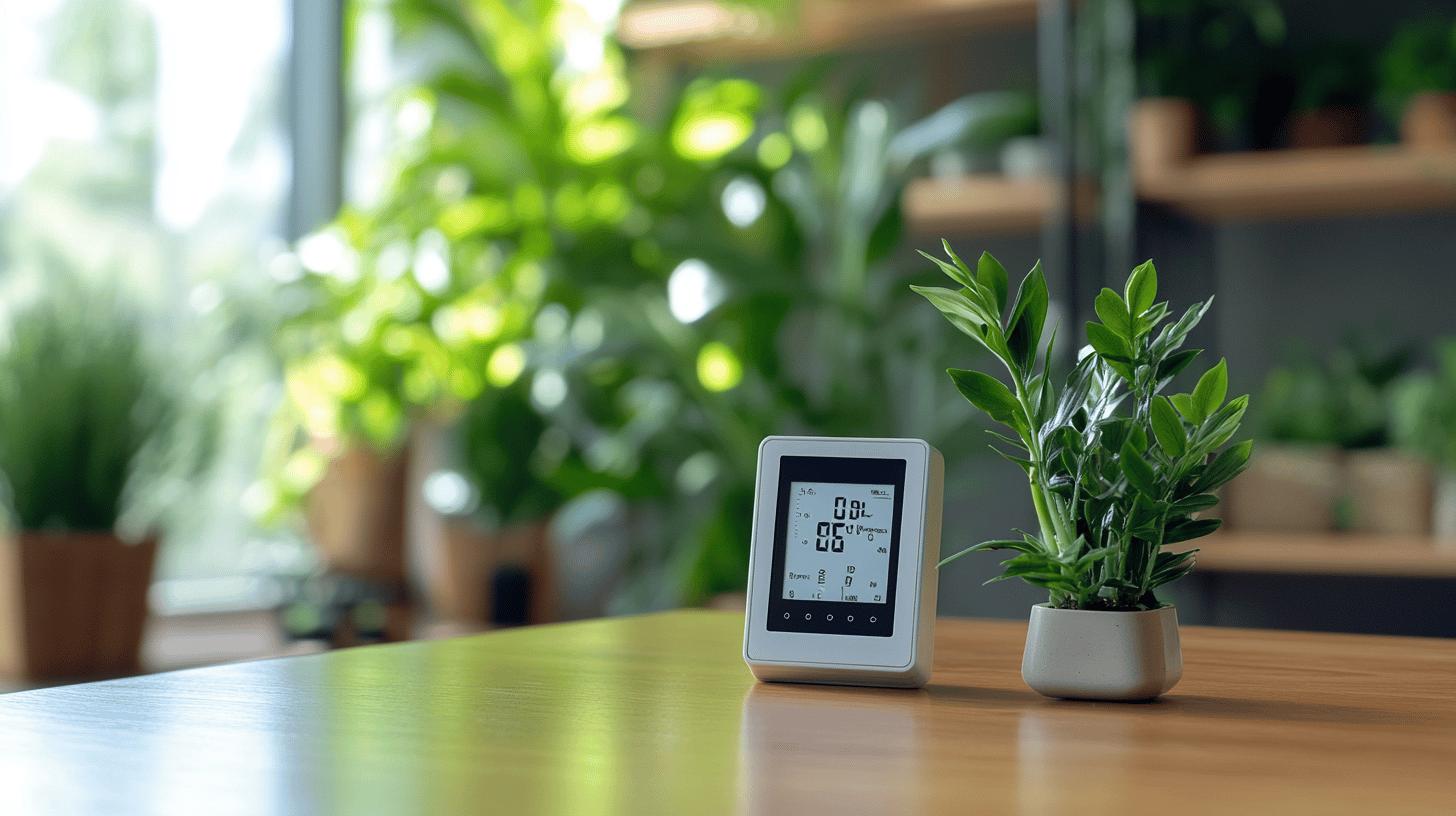Are gym sled tracks damaging your sports hall floors? Integrating turf lanes might seem like a perfect solution for versatile gym training, but improper installation can lead to costly court damage. Discover the key factors of synthetic turf, such as durable fibres and effective installation techniques, which ensure seamless integration without compromising your facility’s floor integrity. By choosing the right materials and employing meticulous installation methods, gym managers can enhance their facilities while safeguarding their investment. Explore this comprehensive guide to achieve seamless turf integration without fear of damaging the underlying courts.
Understanding Gym Sled Tracks and Turf Integration
Gym sled tracks are specialised lanes used in fitness facilities to accommodate sled exercises. These tracks enable athletes to perform high-intensity, resistance-based workouts that enhance strength, endurance, and cardiovascular fitness. Commonly found in CrossFit boxes, commercial gyms, and performance centres, gym sled tracks offer a controlled environment for sled pushes and pulls. Integrating these tracks into sports halls requires careful consideration to prevent damage to the underlying surfaces.
Key features of synthetic turf used for sled tracks include:
- Durable Synthetic Fibres: Made from materials like nylon, polyethylene, or polypropylene, which offer longevity and resilience.
- Face Weight: The density of fibres that impacts the turf’s durability and cushioning.
- Pile Height: Shorter pile height facilitates smoother sled movement and reduces friction.
- Thickness: Adequate thickness provides a balance between comfort and performance.
- Slip Resistance: Ensures athlete safety by reducing the risk of slipping during exercises.
.
When integrating turf lanes within sports hall floors, it is crucial to consider the potential impact on the existing surface. The choice of turf, its installation method, and the protective measures employed are vital to maintaining the integrity of the court. Failing to address these factors can lead to wear and tear, compromising both the performance of the gym sled tracks and the longevity of the sports hall floors. Therefore, strategic planning and expert installation are imperative to achieve a seamless integration that enhances the facility without causing damage.
Selecting the Right Turf for Sled Tracks
Selecting the appropriate synthetic turf for gym sled tracks is pivotal to optimising performance and ensuring safety. The primary types of gym turf include Standard Turf, Tracks, Bespoke Turf, and Sports Turf. Each type is constructed from durable synthetic fibres such as nylon, polyethylene, or polypropylene, which are non-toxic and engineered for resilience. Standard Turf is versatile, available in various colours, and suitable for general use. Tracks are specifically designed for sprinting and sled-pulling, offering pre-marked lanes that enhance training precision. Bespoke Turf allows for customisation with logos or unique colours, supporting brand identity. Sports Turf, often used in outdoor settings, is designed to withstand high-impact sports and varying weather conditions.
| Type of Turf | Key Benefits |
|---|---|
| Standard Turf | Versatile, available in multiple colours, suitable for general purpose use |
| Tracks | Pre-marked lanes, ideal for sprinting and sled-pulling |
| Bespoke Turf | Customisable with logos and colours, enhances brand identity |
| Sports Turf | Durable for high-impact sports, suitable for indoor and outdoor use |
When selecting turf for gym sled tracks, it is essential to consider the specific activities conducted on the turf. Each type of turf offers unique benefits that cater to different training requirements. For instance, Tracks are optimal for facilities focusing on sled exercises or sprint training, while Bespoke Turf is advantageous for gyms looking to incorporate branding elements. Additionally, the choice of turf should align with the equipment used, ensuring compatibility with sleds and other gym apparatus to prevent wear and tear.
Durability is another critical factor when choosing synthetic turf. The turf must withstand the rigours of high-intensity workouts while maintaining its structural integrity over time. Factors such as face weight, pile height, and overall thickness play a significant role in the turf’s durability. A higher face weight equates to denser fibres, offering better cushioning and longevity. Shorter pile heights facilitate smoother sled movement and reduce friction, which is particularly beneficial for facilities with frequent sled use. Prioritising these elements ensures that the gym flooring solutions not only meet the functional demands but also provide long-term value and aesthetic appeal.
Installation Techniques for Turf Lanes

Proper preparation and surface requirements are fundamental to achieving seamless installation of turf lanes for gym sled tracks. The surface must be level, clean, and dry to ensure the turf adheres correctly and maintains its structure over time. A level surface prevents uneven wear and enhances the safety and performance of athletes using the tracks. Cleaning the area thoroughly removes debris and dust, enabling the adhesive to bond effectively. Dry conditions are crucial, as moisture can compromise the adhesive’s efficacy, leading to potential lifting or bubbling of the turf. Before installation, conducting a flooring durability testing can help identify any weaknesses in the substrate that may require reinforcement, ensuring the underlying surface supports the turf without risk of damage.
- Assessment: Inspect the surface for any irregularities or damage and repair as necessary.
- Cleaning: Ensure the surface is free of dust and debris, which can interfere with adhesion.
- Levelling: Use a levelling compound if needed to achieve a smooth and even surface.
- Adhesive Application: For glue-down installations, apply turf adhesive evenly across the surface.
- Seam Tape Usage: For modular turf tiles, utilise seam tape to secure the edges and prevent shifting.
- Installation Precision: Lay the turf carefully, aligning the edges precisely to avoid gaps or overlaps.
.
Ensuring installation precision is key to avoiding future damage to courts beneath turf lanes. Aligning the turf correctly during installation mitigates issues such as edge lifting, which can pose tripping hazards and lead to turf deterioration. Employing professional techniques, even in DIY scenarios, enhances the durability and visual appeal of the installation. Regular checks post-installation can identify potential issues early, allowing for prompt remediation and preserving both the turf and the underlying court’s integrity.
Protecting Courts Underneath Turf Lanes
Integrating turf lanes for gym sled tracks can pose significant risks to the underlying sports courts if not executed properly. One primary concern is the potential for damage to the court’s surface due to the pressure and friction exerted by sled exercises. These activities can lead to abrasions, indentations, or even cracks if the court surface is not adequately protected. Moreover, improper installation of turf can contribute to moisture retention, which may lead to warping or degradation of the court materials over time. As such, it is imperative to assess the condition of the court prior to installation and implement measures that safeguard its structural integrity.
Employing protective layering techniques is an effective strategy to mitigate these risks. One approach involves the use of underlay mats or shock pads beneath the turf, which serve as a cushioning barrier, absorbing impact and reducing stress on the court surface. Materials such as rubber, foam, or specialised geotextiles can offer excellent shock absorption properties, distributing the load evenly across the court. Additionally, ensuring that the adhesive used for turf installation is compatible with the court material can prevent chemical reactions that might compromise the surface. These protective measures not only enhance the longevity of the court but also ensure optimal performance of the turf lanes.
Regular checks and maintenance practices are crucial in preventing wear and tear over time. Routine inspections can identify early signs of damage, such as edge lifting or surface bubbling, allowing for timely intervention. Cleaning and maintaining both the turf and the protective layers will help in preserving their functionality and appearance. It is also beneficial to periodically reassess the installation setup, making adjustments as necessary to accommodate changes in usage patterns or facility expansions. By prioritising maintenance, facilities can extend the lifespan of both the turf and the courts, ensuring a safe and effective environment for athletes.
Maintenance and Care for Turf Lanes
Maintaining turf lanes for gym sled tracks involves routine care that ensures the longevity and performance of the surface. Artificial turf is relatively low-maintenance compared to natural grass, requiring basic cleaning and upkeep to preserve its appearance and functionality. Regular vacuuming helps remove debris and dust, preventing them from embedding within the fibres. For stain removal, using soapy water is effective in treating minor spills without damaging the turf. Periodically sanitising the surface with a carpet cleaner and deodoriser keeps the turf hygienic and fresh, enhancing the experience for gym users.
- Vacuuming: Regularly vacuum the turf to remove dust and debris.
- Stain Removal: Use soapy water to address spills and stains promptly.
- Sanitisation: Apply a carpet cleaner and deodoriser to maintain hygiene.
- Inspection: Conduct routine checks for signs of wear or damage.
- Edge Maintenance: Ensure edges remain secure to prevent lifting.
.
Regular maintenance of turf lanes not only extends their lifespan but also optimises their performance. Addressing minor issues promptly prevents them from escalating into major problems that could compromise the integrity of the turf. Consistent care maintains the turf’s appearance, ensuring a professional and inviting environment for athletes. Moreover, well-maintained turf enhances safety by providing a stable and clean surface for sled exercises, reducing the risk of injuries and fostering a more effective workout setting.
Case Studies: Successful Turf Lane Integrations

Gyms that have successfully integrated turf lanes into their fitness facilities have reported numerous benefits, particularly in enhancing workout diversity and improving athlete safety. These facilities have observed increased user satisfaction due to the versatility and functionality of the sled tracks. By effectively protecting the underlying courts, these gyms have managed to maintain the structural integrity of their surfaces, avoiding costly repairs and ensuring long-term durability. The integration of turf lanes has also contributed to a more dynamic training environment, allowing for high-intensity exercises such as sled pushes and pulls without compromising the flooring beneath.
Highlighted Case Study
One noteworthy example is FitZone, a gym renowned for its comprehensive gym renovation projects. Initially, FitZone faced challenges with integrating turf lanes over their existing hardwood courts without causing damage. The solution involved a meticulous approach to court protection, employing a multi-layered system with shock-absorbing underlays beneath the synthetic turf. This method prevented direct contact between the turf and the hardwood, distributing the stress evenly and mitigating potential damage. The gym also utilised a non-reactive adhesive compatible with both the turf and the court materials. These strategies not only preserved the court but also enhanced the performance of the turf lanes, offering a safe and effective workout space.
The experiences of these fitness facilities highlight essential lessons for successful turf integration. First and foremost is the importance of selecting the right protective measures tailored to the specific needs of the court and the turf. Additionally, ongoing maintenance and regular inspections play a critical role in sustaining the functionality of both the turf and the underlying surface. By learning from these case studies, other gyms can adopt best practices that ensure seamless turf integration, optimising their training environments while safeguarding their investments.
Final Words
Integrating gym sled tracks with turf lanes requires careful planning and selection.
Using durable synthetic materials while considering court protection strategies is essential.
Selecting appropriate turf, ensuring precise installation, and employing protective measures can prevent damage.
Moreover, regular maintenance of turf ensures longevity and peak performance.
Case studies demonstrate the benefits of thoughtful integration, providing practical examples for facility managers making similar decisions.
Ultimately, prioritising the seamless integration of gym sled tracks without damaging courts ensures a superior athletic surface that enhances the user experience.
The Best Flooring For A Home Gym
Design sled lane → Fitness Suite Flooring
FAQ
Q: What are the best types of gym sled tracks with turf lanes?
A: The best gym sled tracks with turf lanes typically utilise synthetic fibres like nylon, polyethylene, or polypropylene for durability. Features include high face weight, optimal pile height, and adequate thickness for protection and longevity.
Q: How can gym sled tracks be integrated without damaging courts?
A: Gym sled tracks can be integrated without damaging courts by using synthetic turf, correct installation techniques, and protective layering materials. These ensure the integrity of both the track and the underlying court.
Q: What materials are used in gym sled track turf?
A: Gym sled track turf is made from durable synthetic fibres such as nylon, polyethylene, and polypropylene, providing non-toxic surfaces with optimal traction and safety.
Q: How long should a sled track be in a gym?
A: A gym sled track should ideally be 10 metres long to allow for effective training and to fit within indoor gym settings.
Q: What is essential for installing sled track flooring?
A: Installing sled track flooring requires a level, clean, dry surface, and the use of turf adhesive and seam tape. Options include glue-down or modular installation for ease and minimal downtime.
Q: How can turf lanes be protected under gym courts?
A: Turf lanes can be protected by using protective layering techniques such as underlayments and regular maintenance checks to prevent wear and tear, maintaining court integrity over time.
Q: What maintenance practices are recommended for gym turf lanes?
A: Routine maintenance includes vacuuming, stain removal with soapy water, and sanitising with carpet cleaner. Regular inspections extend turf lifespan and ensure consistent performance.


